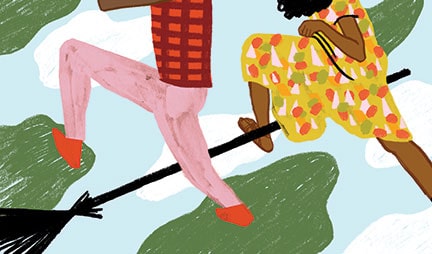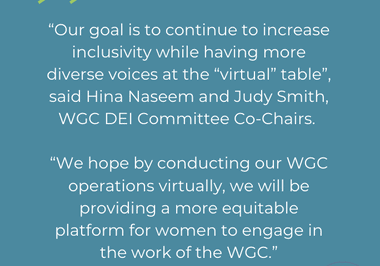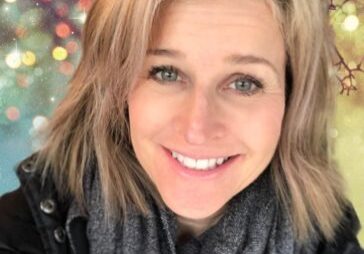THE ROMANCE OF THE SECOND WEDDING
STORY BY Marion Winik ILLUSTRATION BY Paige Vickers
The day of my first wedding really was the happiest day of my life. Held at my 
Thirteen years later, I married again, by then widowed and raising two sons alone. In planning my second wedding, few of the frothy rituals that seemed so indispensable the first time made any sense to me — and of course my mother would no longer be footing the bill. But though we could have taken a quiet little trip to the courthouse, my philosopher groom and I wanted something more romantic and more personal. Not a gala, but an event that would involve our closest family and friends in our second attempts at lifelong partnership.
Like anyone who says the wedding vows a second time, we knew a few things about always and forever. Things will always be more complicated than you think, for instance. And forever is a goal no mortal can surely claim. We knew by the broken hearts, by the funerals, by the trouble we’d seen, how little can be promised. And in light of all that, if we were older and wiser and still stunned silly by love, shouldn’t we throw ourselves one hell of a party?
We decided to hold our ceremony in a glade in the woods behind our new house in rural Pennsylvania, then move to the backyard. I spent several afternoons with my stepdaughter-to-be, Emma, making the invitations: cutting paper, laser printing, hand embossing and tying ribbons, dripping sealing wax on each parchment envelope.
Emma and Sam Sartwell
Hayes and Vince Winik
request the honor of your presence
at the marriage of their parents
Like many second weddings, ours was as much about merging our families as forming a twosome. Emma was my maid of honor, Hayes was Crispin’s best man, and the younger children walked us down the aisle. We all wore white: white shirts and shorts for the kids, white satin pedal pushers for me with a lace bustier, white linen drawstring pants and pullover for my curly blond husband – who himself played the wedding march on a Cajun accordion.
Instead of registering for gifts, we had interned our guests to pitch in. The 35 adults and children not only witnessed the event but put it on: They cleaned, decorated, and arranged flowers, hauled rocks and rental equipment, prepared food. My children’s grandmother – my late first husband’s mother – baked our wedding cake and drove down with it from the Poconos. The highlight of the whole event was a talent show in the cornfields that went on into the evening with music, poetry, lip-synch dance routines and trampoline demonstrations.
One lingering question was answered for me that day. You really can make those promises with just as much passion the second time around. Such is the regenerative power of the human heart.
Since then, I’ve been invited to or heard of a whole raft of second weddings. Released from their frozen positions atop the third tier of frosted cake – and from parental controls – the bride and groom dream up celebrations that express their personalities and their approach to marriage.
One couple remarried in a frescoed palazzo in Venice then took the wedding party into the countryside for a few days of feasting and wine tasting. Two newspaper editors rented out a lodge near Yosemite and invited 46 people for a weekend that included a five-mile hike the morning before the ceremony.
Last summer, friends in Austin, Texas, received invitations to a surprise 45th birthday party for our friend Dubravka, thrown by her boyfriend Terry and her 14-year-old son, John. People thought Terry and John were out of their minds. Dubravka, who usually tells everyone else just what will be going on, is not the type of person you throw a surprise party for.
When the night of the party arrived, Dubravka did a professional job of acting astonished as one group of friends after another showed up at the supposed “quiet little dinner.” But shortly after cocktails, her son John mounted the stairs, thanked everyone for coming and explained that this wasn’t just a birthday party, it was a wedding.
Harriette Cole, author of “Jumping the Broom: The African-American Wedding Planner,” told me that in the course of writing that book, she buried her first marriage and found her second.
The Baltimore-born style and media maven had been asked to write this book about weddings while in the midst of a divorce. “I decided to focus on traditions that were not just pretty but substantive,” she explains. “Things that had helped people stay together.” She met George Chinsee when he was hired as a photographer for the book and married him three years later.
The many unusual elements of their wedding began with the time and place: the tiny town of Hurleyville, two hours north of her New York City home, at 11 a.m. on a Tuesday, a date provided by Brahman priests, says Cole, who is a devotee of Eastern spiritual traditions. And while her first wedding was a Methodist extravaganza, her second marched to a world beat. The bride wore a form-fitting gold and red sheath, a crocheted cap instead of a veil, and golden sandals made by an African cobbler. Honored family and guests were draped in hand-dyed scarves and were served ginger beer and sorrel tea from the groom’s native Jamaica instead of champagne.
The climax of the ceremony was, naturally, jumping the broom, the American slave ritual that gave Cole’s book its name. Because legal marriage was prohibited, because there was no place or object that slaves could keep sacred, the act of a jumping over a decorated broom became the commitment ritual. “As we prepared to jump,” Cole recalls, “there was a crescendo of drums meant to invoke the grace of the ancestors. Everybody stood up and started cheering wildly – I could hear a West African call, voices and accents from all over the world. Then the moment we jumped, I saw my dead grandmother’s face. She was 101 when she died, right around the time I met George.”
The friend who had introduced me to my second husband, Crispin, sent me a note when she heard of our engagement. Her own second marriage had preceded ours by a year. We quoted her message – which may just speak for all second marriages – on our invitation: This is the ephemeral and elusive happy that you can’t even look for because it doesn’t have a name or a site. It floats and soars through luck, karma, destiny’s twists and turns. If you are very blessed, you turn around and it grabs you tight around your heart, and you have the intuition to grab back, smiling and breathless, brave and stupid.*




